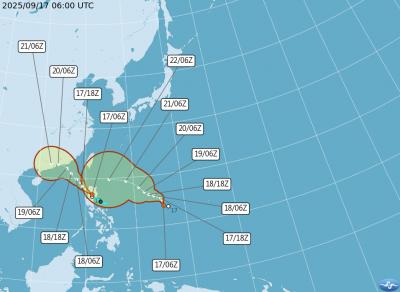Three new cases of whooping cough were reported in northern Taiwan last week, the Centers for Disease Control (CDC) said yesterday, as it reported 584 new COVID-19 hospitalizations and 90 deaths.
CDC Epidemic Intelligence Center Deputy Director Lee Chia-lin (李佳琳) said the three new cases of pertussis, commonly known as whooping cough, are members of the same family, who began experiencing respiratory symptoms early last month.
“During contact tracing, [a young man’s] father and sister were found to have symptoms, and both tested positive for whooping cough,” Lee said.

Photo: CNA
A total of 16 cases have been reported this year, including 11 from four family clusters, she said, adding that the accumulated number is the highest for the period in five years.
CDC physician Lin Yung-ching (林詠青) said the young man does not have an underlying health condition, but had not been vaccinated against whooping cough.
He began coughing early last month, but only sought traditional Chinese medicine treatment for his serious coughing, a high-pitched sound when breathing and apnea, Lin said.
In the middle of this month, he went to a hospital, where a doctor tested him for whooping cough, which came back positive on Tuesday last week, he said.
It had been about seven weeks from the onset of his symptoms to diagnosis, he said.
While two of his family members were also confirmed with whooping cough, 37 close contacts at the school he attends did not have symptoms, but postexposure prophylaxis would be administered, and contact tracing would be expanded, he said.
“Whooping cough is highly contagious among unvaccinated people,” CDC Deputy Director-General Philip Lo (羅一鈞) said, adding that in some cases one person could transmit it to up to 17 people.
Whooping cough has a reproductive number (R0) of 15 to 17, with R0 being the average number of people that one infected individual could infect in a susceptible (unvaccinated) population, he said.
The father and sister of the infected person tested positive yesterday morning, so contact tracing is ongoing, Lo said.
“As recent cases of whooping cough had been diagnosed relatively late after their symptoms had started, there are risks of outbreak in the local communities,” he said.
“We urge people to see a doctor if they are experiencing prolonged coughing, and we also remind doctors to promptly test and report suspected cases, as the risk of local infection is increasing,” he added.
As vaccination is the best protection against whooping cough, parents of young children should have them get a five-dose pertussis-containing vaccine, which is part of the CDC’s recommended vaccination schedule before children enter elementary school, Lo said.
Meanwhile, the 584 new local COVID-19 hospitalizations and 90 deaths reported last week were lower than the weekly numbers in the previous week, Lee said.
Genome sequencing data of local infections in the past four weeks showed that the JN.1 and KP.3 subvariants of SARS-CoV-2 each accounted for 24 percent of the cases, while LB.1 was responsible for about 21 percent, she said.
The weekly number of COVID-19 hospitalizations has fallen for three weeks, but last week’s drop could be because the typhoon caused the cancelation of many public events and people to stay home, so it might slightly rebound this week, Lo said.
The current epidemic period is expected to end by the second half of next month, he added.

PEAK MONTHS: Data showed that on average 25 to 27 typhoons formed in the Pacific and South China seas annually, with about four forming per month in July and October One of three tropical depressions in the Pacific strengthened into a typhoon yesterday afternoon, while two others are expected to become typhoons by today, Central Weather Administration (CWA) forecaster Lee Ming-hsiang (李名翔) said yesterday. The outer circulation of Tropical Depression No. 20, now Typhoon Mitag, has brought light rain to Hualien, Taitung and areas in the south, Lee said, adding that as of 2pm yesterday, Mitag was moving west-northwest at 16kph, but is not expected to directly affect Taiwan. It was possible that Tropical Depression No. 21 would become a typhoon as soon as last night, he said. It was moving in a

A Taiwanese academic yesterday said that Chinese Ambassador to Denmark Wang Xuefeng (王雪峰) disrespected Denmark and Japan when he earlier this year allegedly asked Japan’s embassy to make Taiwan’s representatives leave an event in Copenhagen. The Danish-language Berlingske on Sunday reported the incident in an article with the headline “The emperor’s birthday ended in drama in Copenhagen: More conflict may be on the way between Denmark and China.” It said that on Feb. 26, the Japanese embassy in Denmark held an event for Japanese Emperor Naruhito’s birthday, with about 200 guests in attendance, including representatives from Taiwan. After addressing the Japanese hosts, Wang

One of two tropical depressions that formed offshore this morning could turn into a moderate typhoon by the weekend, the Central Weather Administration (CWA) said today. Tropical Depression No. 21 formed at 8am about 1,850km off the southeast coast, CWA forecaster Lee Meng-hsuan (李孟軒) said. It is expected to move in a northwesterly direction as it continues building momentum, possibly intensifying into Typhoon Mitag this weekend, she added. The radius of the storm is expected to reach almost 200km, she said. It is expected to approach southeast of Taiwan on Monday and pass through the Bashi Channel between Tuesday and Wednesday,

About nine Taiwanese are “disappeared,” detained, or otherwise deprived of freedom of movement in China each month, the Mainland Affairs Council (MAC) said yesterday. Between Jan. 1 last year and Aug. 31 this year, 188 Taiwanese travelers went missing, were detained and interrogated, or had their personal freedom restricted, with some questioned in airports or hotel lobbies, the council said. In a statement ahead of the Mid-Autumn Festival, the council urged people visiting China for any reason to be highly vigilant and aware of the risks. Of the reported cases, 50 people were “disappeared” after entering China, 19 were detained and 119 had